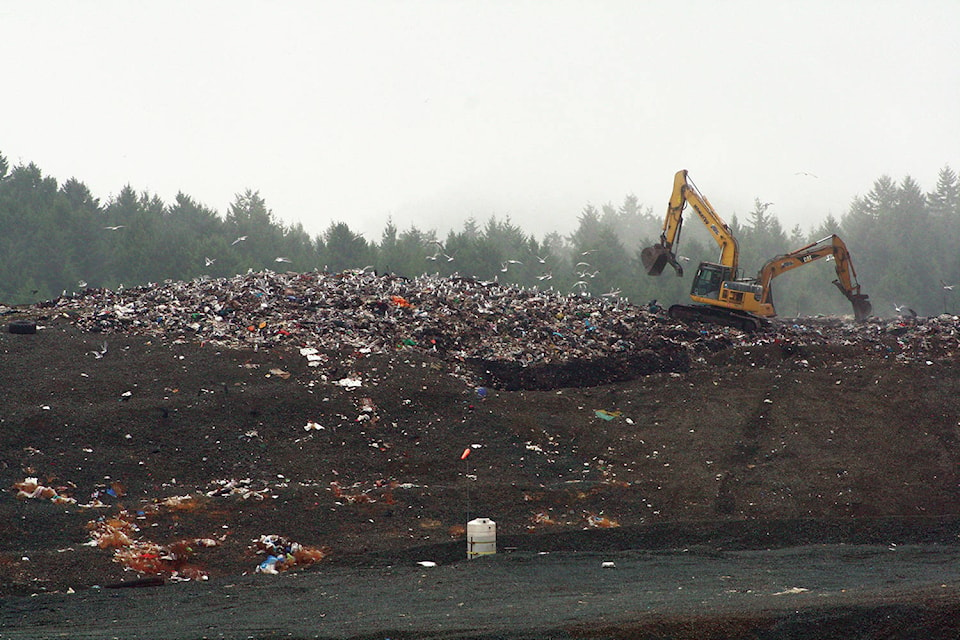More than two months after the Capital Regional District expected to be sending Class A biosolids from its Hartland site to a Richmond cement facility for use as an alternative fuel source, it still isn’t happening.
According to a staff report to be presented to the CRD’s environmental services committee on Wednesday (June 16), both biosolids and less-processed “dewatered residuals” are currently being deposited as controlled waste and getting mixed in with municipal solid waste at the Hartland landfill.
A workplace death in late November at the Lafarge plant in Richmond forced it to close and not be able to accept the region’s biosolids. Glenn Harris, CRD senior manager of the environmental protection division, told Black Press Media in February they expected the cement plant to resume taking the biosolids by the end of March.
READ ALSO: Plant closure sends more biosolids to Hartland Landfill
But the report states the CRD’s residuals treatment facility isn’t producing material up to the company’s standards. As soon as the facility can “reliably produce a dried product that meets particle size requirements in the contract,” the cement plant will accept it.
The expectation is for biosolids to be sent the cement plant by this summer, communications coordinator Tracy Urquhart said.
The CRD has allotted for 700 tonnes of biosolids to be applied to certain areas of the landfill each year during the four to six weeks the cement plant normally closes. Short term, until 2025, these biosolids are to be used as nutrient additives to improve vegetation growth in reforested areas and as a biocover to reduce methane emissions.
The staff report said the CRD doesn’t anticipate environmental or climate implications with the placement of biosolids and dewatered residuals because of controls already in place at the landfill, but community organizations have expressed concern.
In a May 28 letter to the CRD, the Peninsula Biosolids Coalition argued that because the landfill is located at the headwaters of the Tod Creek Watershed, any kind of misstep could have heavy environmental implications. Research on the possible benefits and harms of biosolids is mixed and little is known about their long-term impacts.
A CRD spokesperson said kinks are still being worked out in some of the equipment and processes at both the wastewater treatment facility in Esquimalt and the residuals treatment facility at Hartland. On June 7, a public service announcement was issued, warning of intermittent odours in Esquimalt and Saanich due to the ongoing adjustments.
READ ALSO: Capital Regional District approves land use for sewage biosolids
Do you have a story tip? Email: jane.skrypnek@blackpress.ca.
Follow us on Twitter and Instagram, and like us on Facebook.
